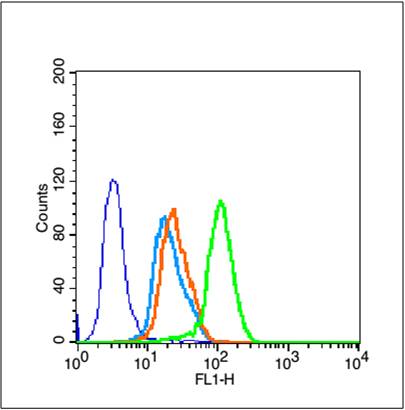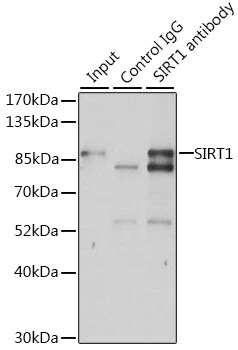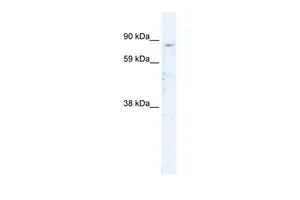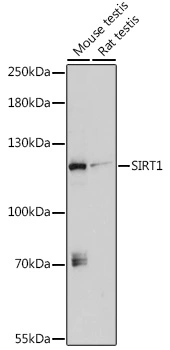
IHC-P analysis of rat lung tissue using GTX85106 SIRT1 antibody. Working concentration : 20 microg/ml
SIRT1 antibody
GTX85106
ApplicationsWestern Blot, ELISA, ImmunoHistoChemistry, ImmunoHistoChemistry Paraffin
Product group Antibodies
TargetSIRT1
Overview
- SupplierGeneTex
- Product NameSIRT1 antibody
- Delivery Days Customer9
- Application Supplier NoteWB: 1 microg/mL. IHC-P: 20 microg/mL. *Optimal dilutions/concentrations should be determined by the researcher.Not tested in other applications.
- ApplicationsWestern Blot, ELISA, ImmunoHistoChemistry, ImmunoHistoChemistry Paraffin
- CertificationResearch Use Only
- ClonalityPolyclonal
- Concentration1 mg/ml
- ConjugateUnconjugated
- Gene ID23411
- Target nameSIRT1
- Target descriptionsirtuin 1
- Target synonymsSIR2, SIR2L1, SIR2alpha, NAD-dependent protein deacetylase sirtuin-1, NAD-dependent protein deacylase sirtuin-1, SIR2-like protein 1, regulatory protein SIR2 homolog 1, sirtuin type 1
- HostChicken
- IsotypeIgY
- Protein IDQ96EB6
- Protein NameNAD-dependent protein deacetylase sirtuin-1
- Scientific DescriptionThe Silent Information Regulator (SIR2) family of genes are highly conserved from prokaryotes to eukaryotes and have important functions in the regulation of metabolism, growth and differentiation, inflammation, cellular survival, as well as in senescence and lifespan extension. Sirtuins, including SIRT1-7, are human homologs of yeast Sir2p. Sirtuins are NAD+-dependent histone/protein deacetylases (HDAC) which regulate cellular metabolism, e.g. energy metabolism, and thereby are associated with aging and several age-related diseases. SIRT1 has the closest homology to the yeast Sir2p and is widely expressed in fetal and adult tissues. SIRT1 regulates the p53-dependent DNA damage response pathway by binding to and deacetylating p53, specifically via lysine residue.
- Storage Instruction-20°C or -80°C,2°C to 8°C
- UNSPSC12352203







![Various whole cell extracts (30 microg) were separated by 7.5% SDS-PAGE, and the membrane was blotted with SIRT1 antibody [SZ04-01] (GTX01139) diluted at 1:500. The HRP-conjugated anti-rabbit IgG antibody (GTX213110-01) was used to detect the primary antibody.](https://www.genetex.com/upload/website/prouct_img/normal/GTX01139/GTX01139_HM0617_20200228_WB_w_23053121_111.webp)
![FACS analysis of K562 cells using GTX82793 SIRT1 antibody [1F3]. Green : SIRT1 Purple : negative control](https://www.genetex.com/upload/website/prouct_img/normal/GTX82793/GTX82793_20170912_FACS_w_23061322_582.webp)

